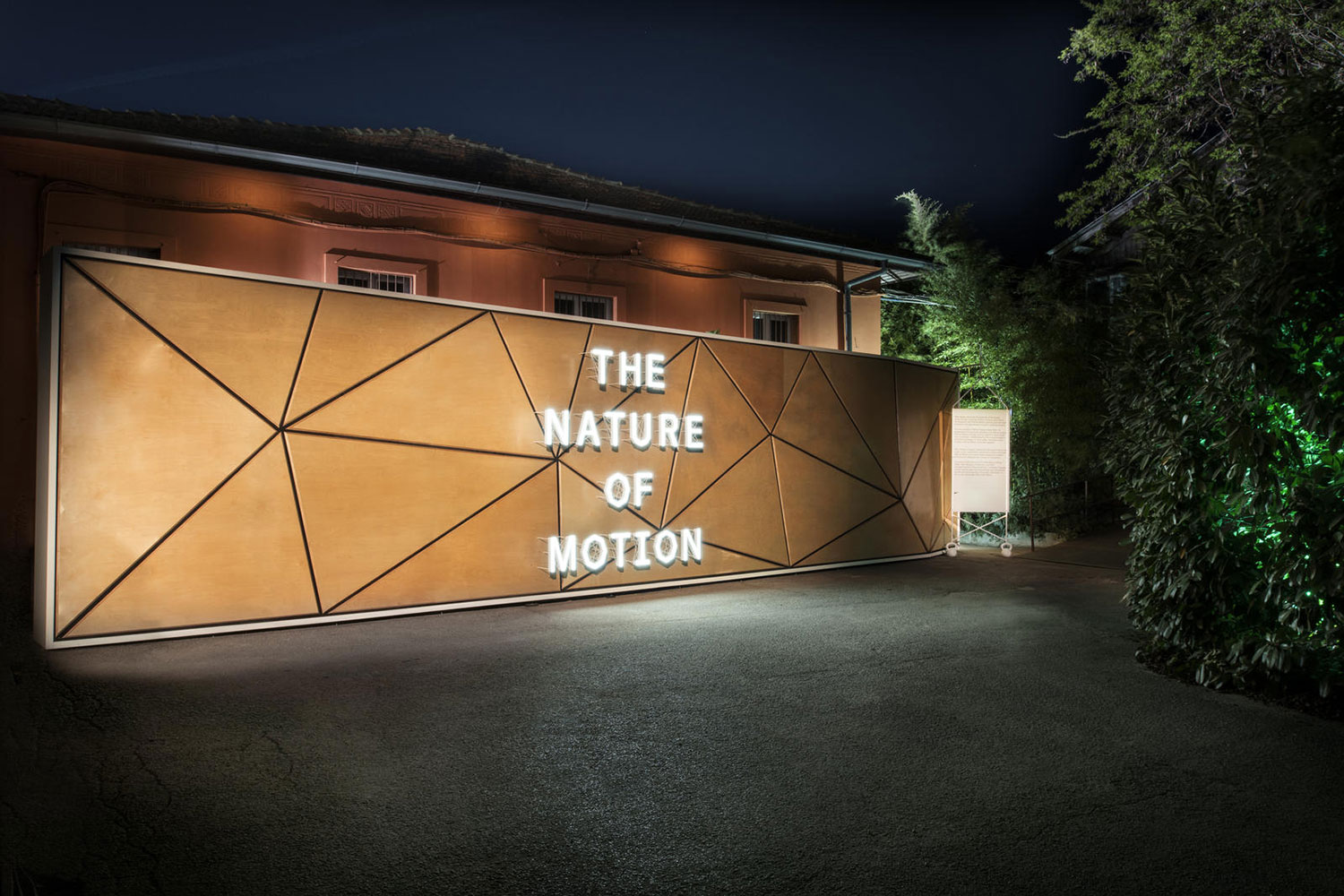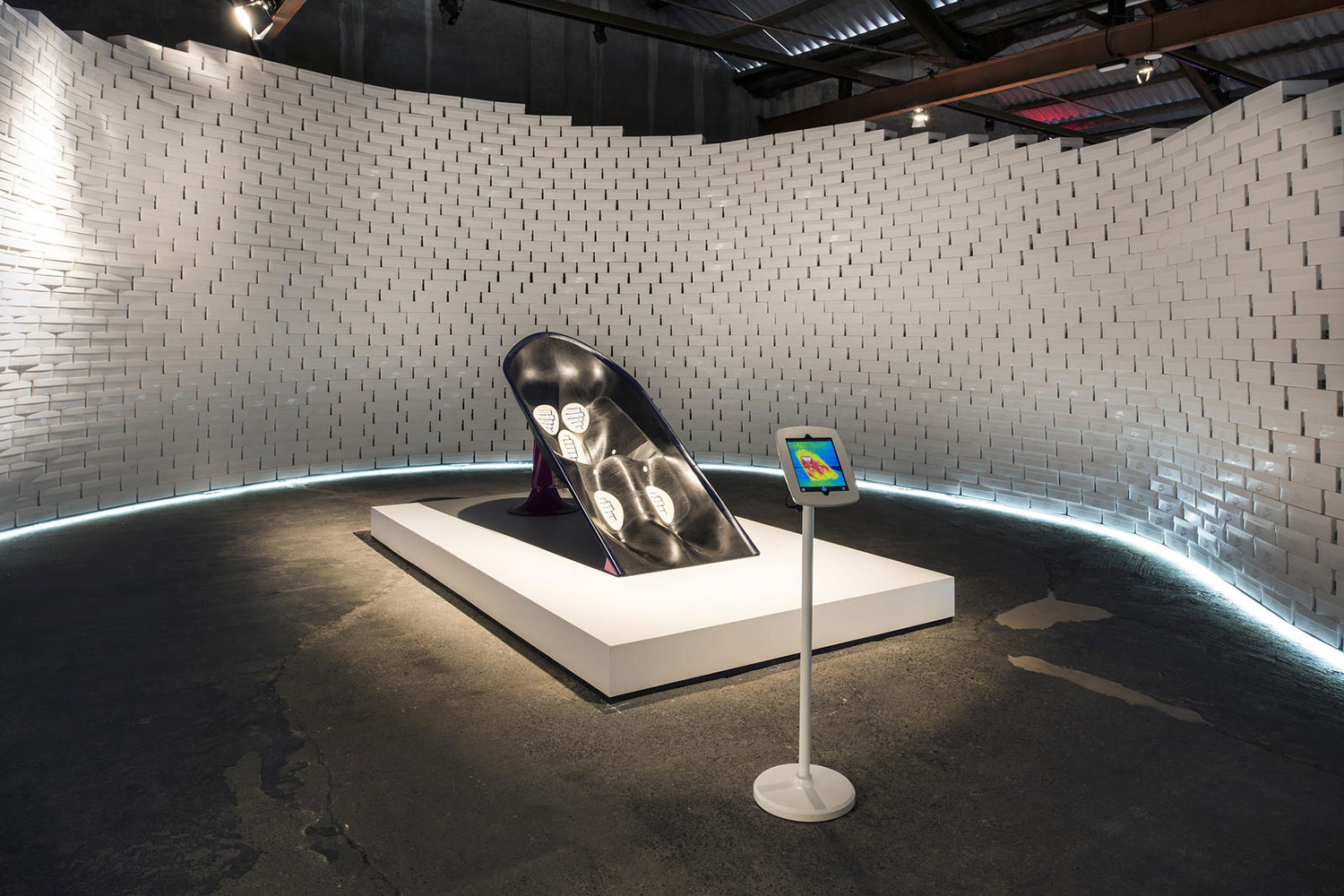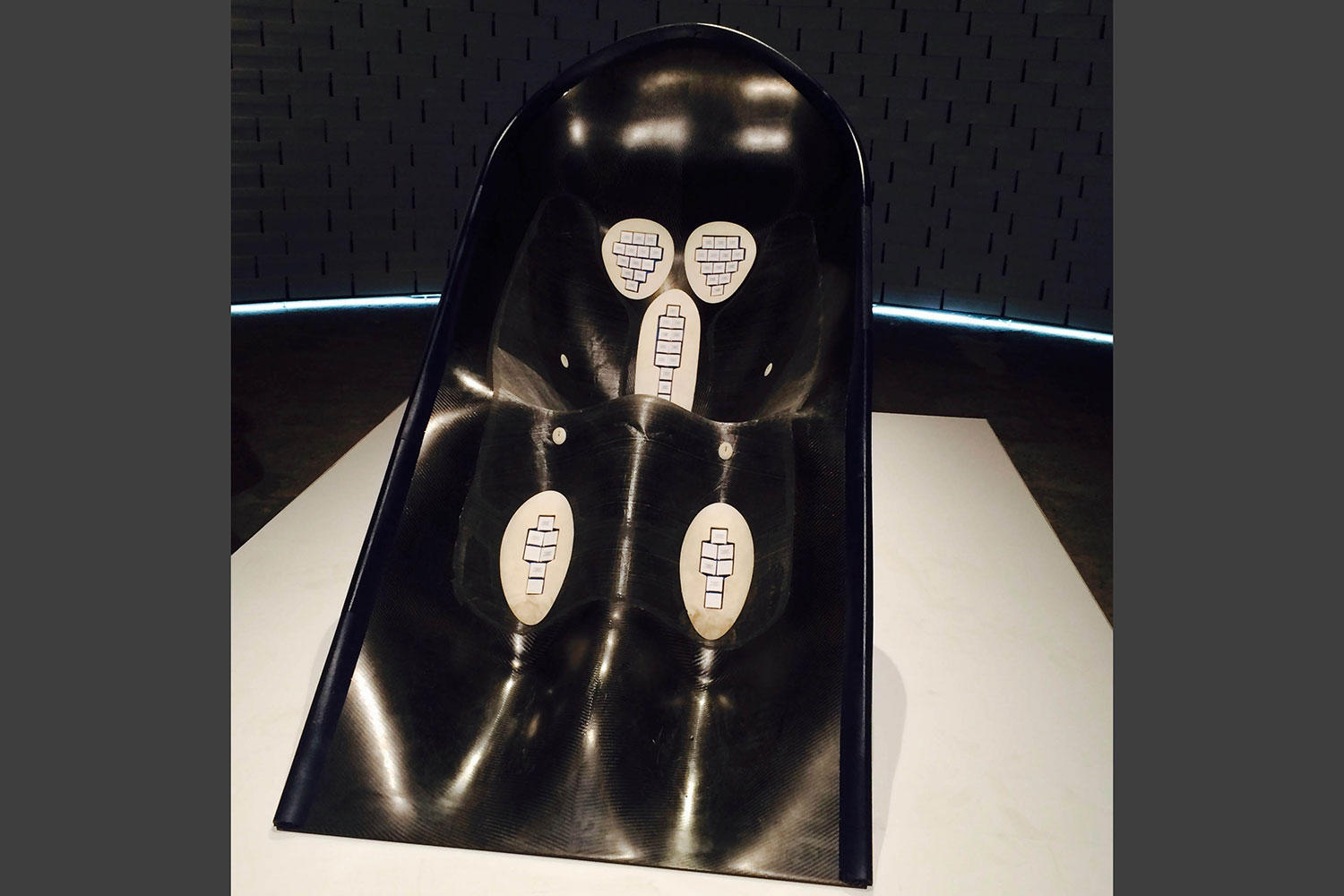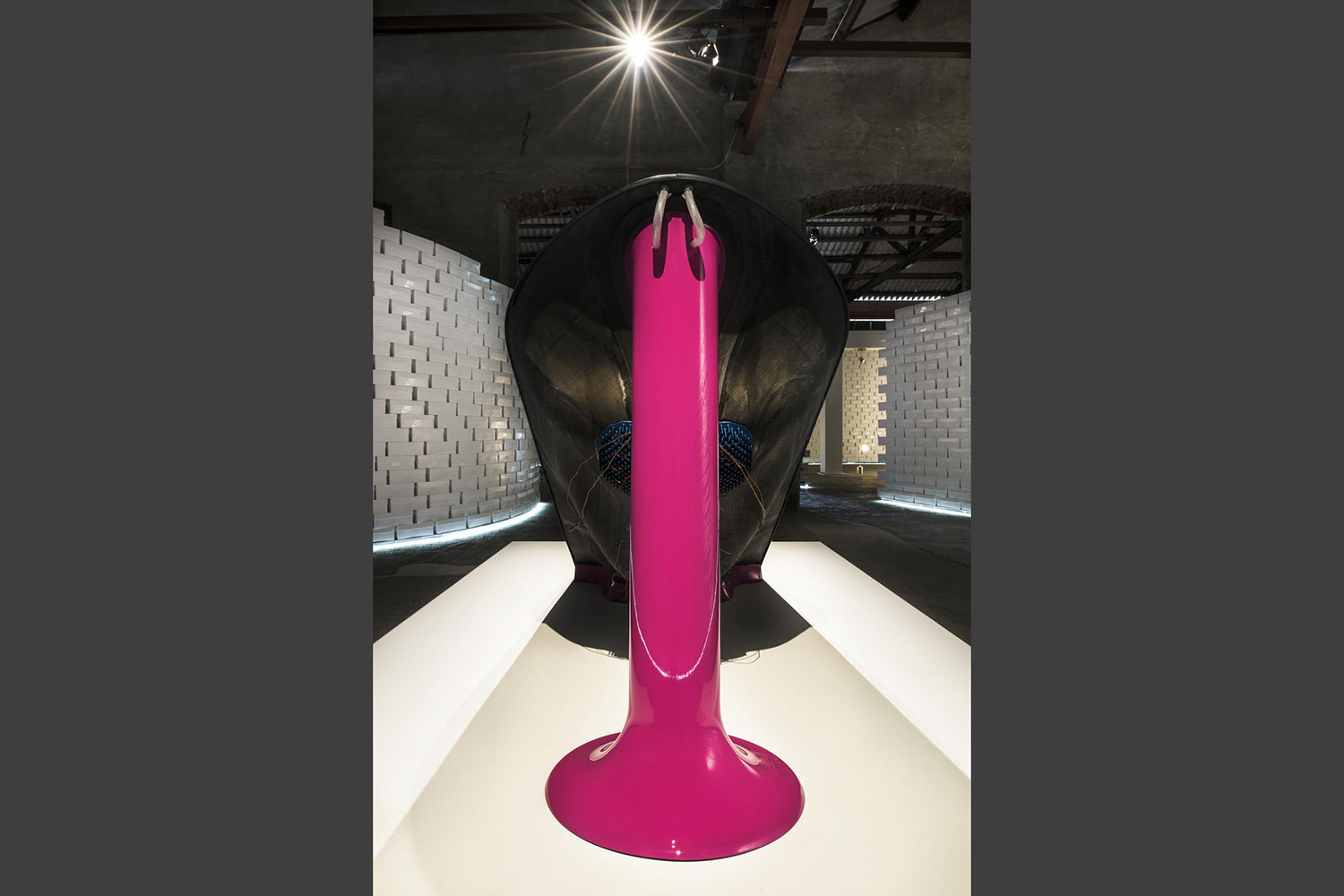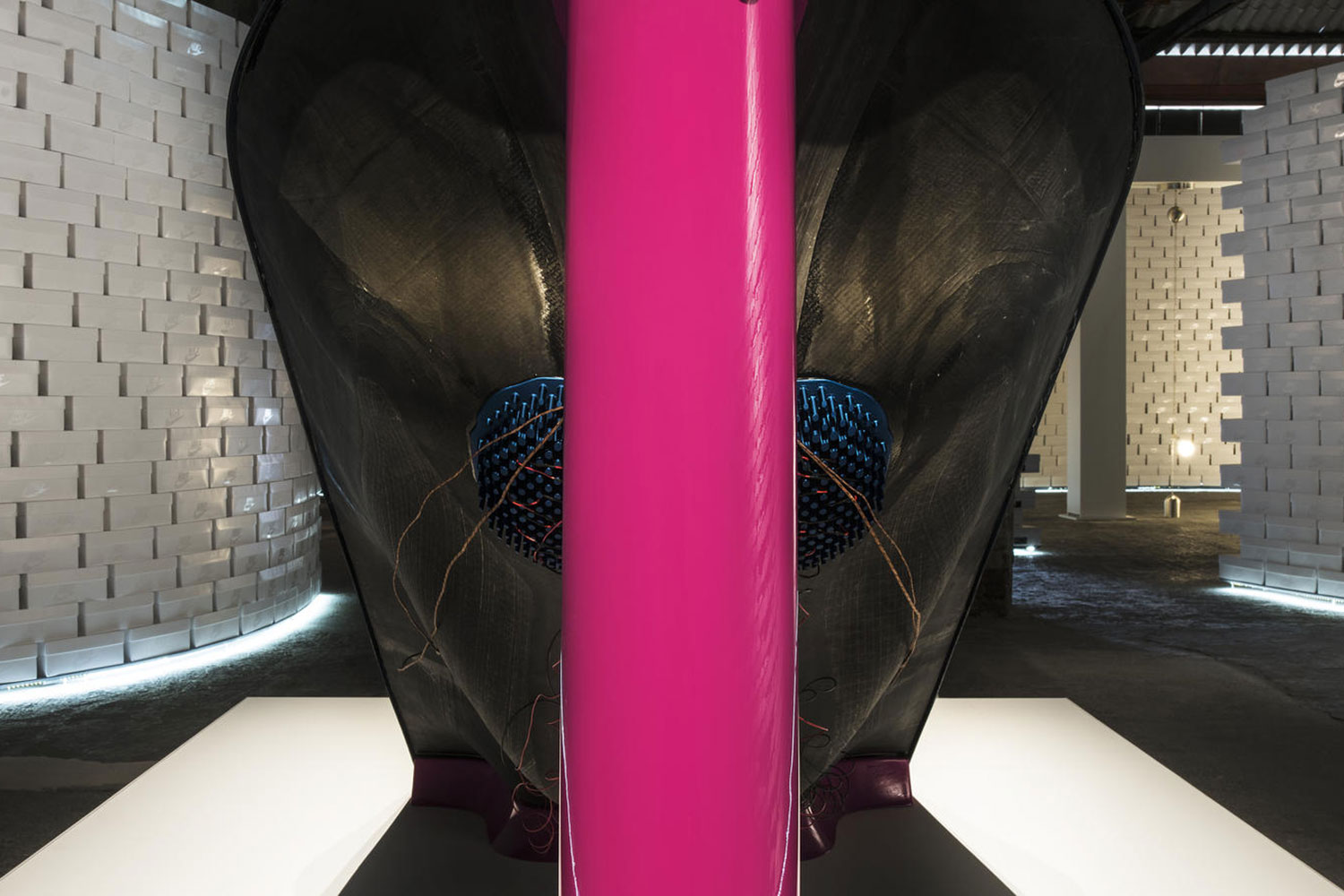Designed by LA-based architect Greg Lynn, the Microclimate Chair, as its name hints at, incorporates a system that helps cool down parts of the body while keeping other parts warm. Such a procedure is important for top sports performers intent on avoiding injury.
The chair, which was built in partnership with Nike for its Nature of Motion exhibition during Milan’s recent Design Week event, is made with a combination of flexible carbon tape and rigid carbon weave. Embedded in the chair’s surface are around 70 thermoelectric devices that heat up or cool down according to information received by its built-in sensors.
“Down the spinal column is a great place to put a lot of cooling,” Lynn explains, “The muscle groups of the thighs and the calves – you don’t want to let those get cold because they’ll immediately contract. So while we’re bringing down the temperature of someone sitting in the chair, we’re warming up their legs.”
In addition, the perimeter of the Microclimate Chair holds a tube that distributes air, diffusing it across the surface of the seat to remove humidity from an athlete to ensure they stay fresh and ready to jump back into a game at a moment’s notice.
Lynn has little doubt about the potential effectiveness of his creation: “If you gave five of these chairs to a college basketball team, they would have a distinct performance advantage over another team that didn’t have them.”
But Lynn insists he didn’t build it with the idea of making a commercial product. Instead, “It’s more about how you think about design and intelligence and information and systems in the world of furniture and ergonomics.” That may be the case, but we bet there’ll be plenty of pro athletes lining up to kick back in one of these if they do ever show up in the locker room.
